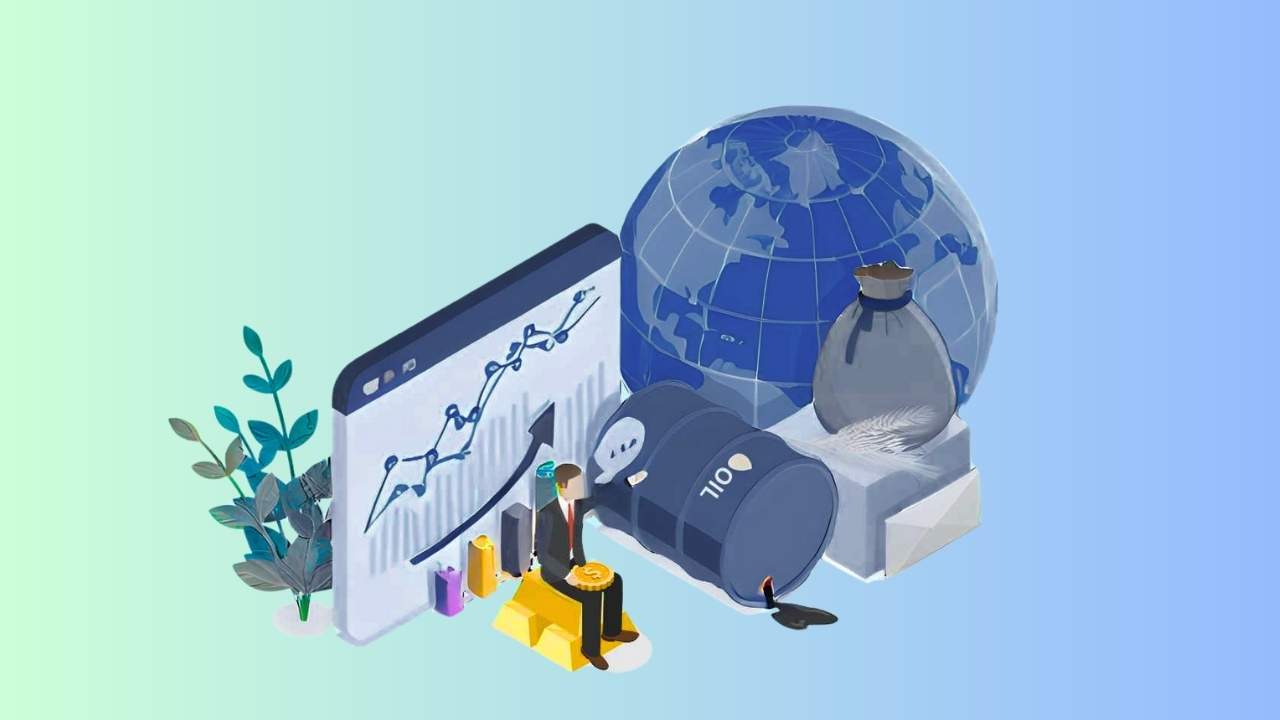In our highly networked world, the prices of mundane commodities—from groceries to gasoline—can fluctuate wildly when nature or politics gets in the way. Wars, trade battles and abrupt storms all ripple across farms, refineries and shipping routes, altering what we pay at the supermarket or pump. Let’s look at how geopolitics and natural disaster affect commodity markets—and what investors and traders can do to ease the shocks.
Geopolitical Factors Affecting Commodity Prices
1. War & Political Instability
When nations conflict, pipelines are cut off and ports are closed. In an instance, the Russia–Ukraine war in early 2022 halted grain and oil exports, and prices for wheat and fuel skyrocketed globally.
2. Sanctions & Trade Restrictions
Governments sometimes restrict or prohibit trade as a means of punishing competitors. U.S. sanctions on Iranian crude since 2018 isolated a large supplier, shrinking global crude supplies and increasing prices.
3. OPEC & Oil Production Decisions
The Organisation of the Petroleum Exporting Countries (OPEC) can throttle the world’s oil supply with the turn of a meeting. In October2022, OPEC+ agreed to reduce production, which led to a nearly instantaneous rise in crude prices.
4. Trade Wars & Tariffs
Import taxes increase the cost of foreign products. In the 2018 U.S.–China trade war, soybean and metal tariffs suffocated exports and imposed additional cost burdens on farmers and manufacturers.
5. Export Bans & Government Policies
To shield domestic buyers, governments can prohibit exports. Indonesia suspended shipments of palm oil in 2022, and India temporarily banned broken‑rice exports—both actions curtailed global supplies and increased prices of edible oils and rice.
Natural Disasters and Market Disruptions
1. Climate Change & Agricultural Commodities
Severe heat and drought can destroy crops. In 2024, a devastating drought in Brazil’s coffee belt cut Arabica production, sending coffee prices to their highest in almost 50 years.
2. Hurricanes & Energy Supply Chains
Hurricanes can take out refineries and drilling rigs. When Hurricane Katrina hit the U.S. Gulf Coast in August 2005, crude-oil and natural-gas prices surged as facilities closed for weeks.
3. Earthquakes & Mining Disruptions
A strong earthquake can suspend metal production. Chile’s February 27, 2010, magnitude‑8.8 earthquake destroyed mines and reduced copper production, driving metal prices up globally.
4. Wildfires & Lumber Prices
When fires burn in forests, sawmills have to shut down. Canada’s record wildfires during summer 2023 compelled most mills to shut down, reducing lumber supply and driving prices significantly higher.
5. Tsunamis & Shipping Routes
A tsunami has the capacity to immobilize ports and derail sea commerce. Following Japan’s March 11, 2011 earthquake and tsunami, major Pacific shipping centers were inaccessible, interrupting oil and raw-material shipments throughout Asia.
Case Studies at a Glance
| Event | Commodity Affected | Market Impact |
|---|---|---|
| Russia–Ukraine War (2022) | Wheat, Oil, Gas | Global wheat and fuel prices surged as Black Sea exports were blocked. |
| U.S.–China Trade War (2018) | Soybeans, Metals | Tariffs cut U.S. soybean exports by over 25% and raised metal production costs. |
| Hurricane Katrina (2005) | Crude Oil, Natural Gas | Gulf‑Coast refinery shutdowns spiked fuel prices for months. |
| Brazil Drought (2024) | Coffee | Arabica‑bean yields plunged, sending coffee prices to 50‑year highs. |
| Indonesia Palm Oil Export Ban (2022) | Palm Oil, Edible Oils | Supply cuts fueled a global edible‑oil price rally. |
How Traders and Investors Can Mitigate Risks
- Diversify Across Commodities
Holding a mix—like gold, oil and agricultural goods—spreads the risk of any one shock. - Hedge with Futures and Options
Lock in prices today to protect against tomorrow’s spikes or drops. - Track Global Trends
Watch OPEC meetings, trade‑talk headlines and weather forecasts to stay one step ahead. - Invest in Safe‑Haven Assets
Gold and silver often rise when geopolitics or disasters unsettle markets. - Combine Technical & Fundamental Analysis
Use charts to spot patterns, and study supply‑demand reports to understand root causes.
Conclusion
From rainforests to boardrooms to offshore rigs, a global network produces the commodities powering our lives. When war erupts or a storm hits, that network can unravel—causing ripples in food, fuel and metals markets. By seeing these forces in operation and employing clever strategies—such as diversification and hedging—investors and traders can ride the ups and downs more bravely.
Disclaimer: This blog is for educational purposes only. It does not form an investment advice.










